Filter by
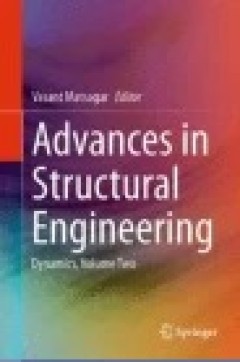
Advances in Structural Engineering: Dynamics, Volume Two
The book presents research papers presented by academicians, researchers, and practicing structural engineers from India and abroad in the recently held Structural Engineering Convention (SEC) 2014 at Indian Institute of Technology Delhi during 22 – 24 December 2014. The book is divided into three volumes and encompasses multidisciplinary areas within structural engineering, such as earthquak…
- Edition
- Ed. 1
- ISBN/ISSN
- 978-81-322-3557-6
- Collation
- L, 868
- Series Title
- -
- Call Number
- 624 ADV a
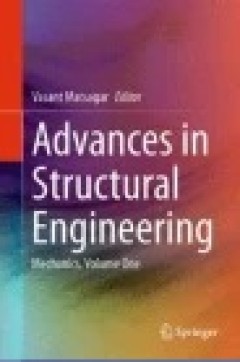
Advances in Structural Engineering: Mechanics, Volume One
The book presents research papers presented by academicians, researchers, and practicing structural engineers from India and abroad in the recently held Structural Engineering Convention (SEC) 2014 at Indian Institute of Technology Delhi during 22 – 24 December 2014. The book is divided into three volumes and encompasses multidisciplinary areas within structural engineering, such as earthquak…
- Edition
- Ed. 1
- ISBN/ISSN
- 978-81-322-3556-9
- Collation
- L, 748
- Series Title
- -
- Call Number
- 624 ADV a
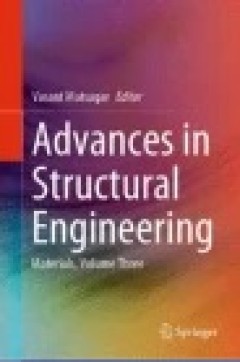
Advances in Structural Engineering: Materials, Volume Three
The book presents research papers presented by academicians, researchers, and practicing structural engineers from India and abroad in the recently held Structural Engineering Convention (SEC) 2014 at Indian Institute of Technology Delhi during 22 – 24 December 2014. The book is divided into three volumes and encompasses multidisciplinary areas within structural engineering, such as earthquak…
- Edition
- Ed. 1
- ISBN/ISSN
- 978-81-322-2187-6
- Collation
- LII, 1041
- Series Title
- -
- Call Number
- 624 ADV a

Best Practices for Commercial Roof-Mounted Photovoltaic System Installation
This SpringerBrief presents information on a wide variety of hazards and the damage potential caused by installation of a photovoltaic (PV) system. The current installation practices for PV systems on roofs create electrical, fire, structural, and weather-related hazards that do not comply to current codes, standards and guidance documents. Potential dangers include structural loading, wind loa…
- Edition
- -
- ISBN/ISSN
- 978-1-4939-2883-5
- Collation
- -
- Series Title
- -
- Call Number
- 690

Dynamics of Coupled Structures, Volume 4 : Proceedings of the 33rd IMAC, A Co…
Dynamics of Coupled Structures, Volume 4. Proceedings of the 33rd IMAC, A Conference and Exposition on Balancing Simulation and Testing, 2015, the fourth volume of ten from the Conference brings together contributions to this important area of research and engineering. The collection presents early findings and case studies on fundamental and applied aspects of Structural Dynamics, including pa…
- Edition
- -
- ISBN/ISSN
- 9783319152097
- Collation
- 173 pages
- Series Title
- -
- Call Number
- 690
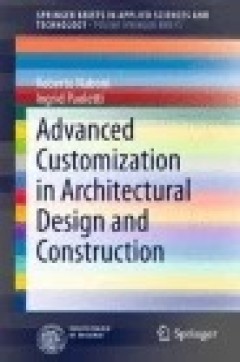
Advanced Customization in Architectural Design and Construction
This book presents the state of the art in advanced customization within the sector of architectural design and construction, explaining important new technologies that are boosting design, product and process innovation and identifying the challenges to be confronted as we move toward a mass customization construction industry. Advanced machinery and software integration are discussed, as well…
- Edition
- Ed. 1
- ISBN/ISSN
- 978-3-319-04423-1
- Collation
- IX, 170
- Series Title
- SpringerBriefs in Applied Sciences and Technology
- Call Number
- 693.068 NAB a
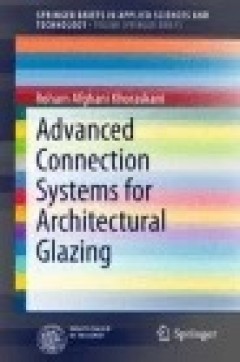
Advanced Connection Systems for Architectural Glazing
This book presents the findings of a detailed study to explore the behavior of architectural glazing systems during and after an earthquake and to develop design proposals that will mitigate or even eliminate the damage inflicted on these systems. The seismic behavior of common types of architectural glazing systems are investigated and causes of damage to each system, identified. Furthermore, …
- Edition
- Ed. 1
- ISBN/ISSN
- 978-3-319-12997-6
- Collation
- VIII, 125
- Series Title
- SpringerBriefs in Applied Sciences and Technology
- Call Number
- 666 KHO a
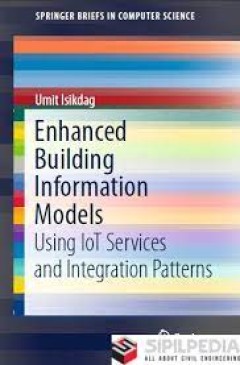
Enhanced Building Information Models Using IoT Services and Integration Patt…
This book explains how to combine and exploit sensor networks and internet-of-things (IoT) technologies and Web-service design patterns to enrich and integrate Building Information Models (BIMs). It provides approaches and software architectures for facilitating the interaction with (and between) BIMs through Web services, and for enabling and facilitating the fusion of the information residing…
- Edition
- -
- ISBN/ISSN
- 978-3-319-21825-0
- Collation
- 56 b/w illustrations
- Series Title
- -
- Call Number
- -

Engineering Geology for Society and Territory - Volume 6 Applied Geology for…
This book is one out of 8 IAEG XII Congress volumes, and deals with the theme of applied geology, which is a critical theme for the global economy. In the international, multidisciplinary approach to major engineering projects (either to macro- or mega-scale), the application of geological investigation techniques is fundamental for properly selecting the location sites, planning the constructi…
- Edition
- -
- ISBN/ISSN
- 978-3-319-09060-3
- Collation
- 189 b/w illustrations, 517 illustrations in colour
- Series Title
- -
- Call Number
- -

Encyclopedia of Earthquake Engineering
The Encyclopedia of Earthquake Engineering is designed to be the authoritative and comprehensive reference covering all major aspects of the science of earthquake engineering, specifically focusing on the interaction between earthquakes and infrastructure. The encyclopedia comprises approximately 265 contributions. Since earthquake engineering deals with the interaction between earthquake distu…
- Edition
- -
- ISBN/ISSN
- 978-3-642-35344-4
- Collation
- 954 b/w illustrations, 1477 illustrations in colour
- Series Title
- -
- Call Number
- -
 Computer Science, Information & General Works
Computer Science, Information & General Works  Philosophy & Psychology
Philosophy & Psychology  Religion
Religion  Social Sciences
Social Sciences  Language
Language  Pure Science
Pure Science  Applied Sciences
Applied Sciences  Art & Recreation
Art & Recreation  Literature
Literature  History & Geography
History & Geography